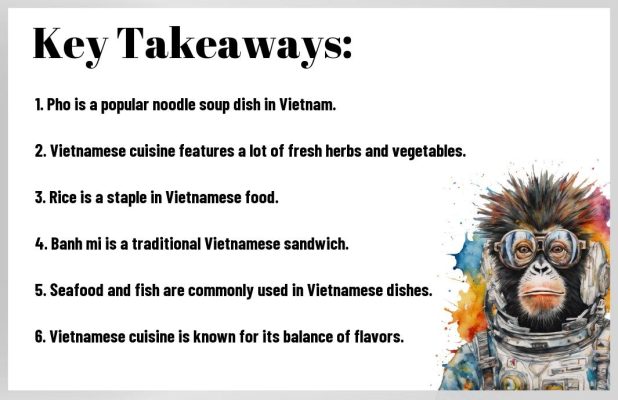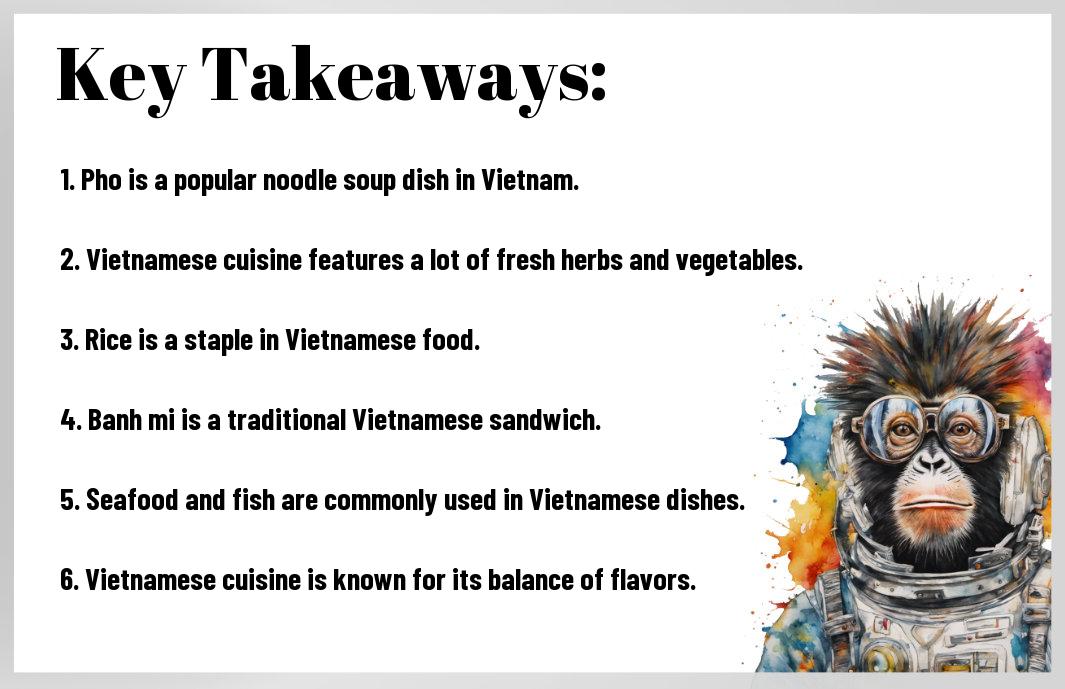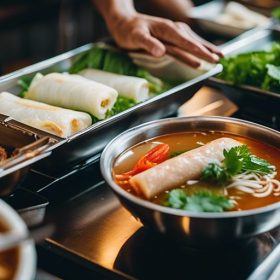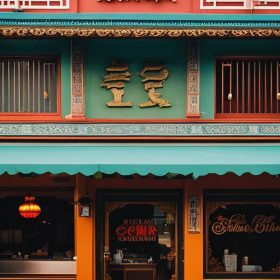Embark on a culinary adventure as you explore the diverse and delicious cuisine of Vietnam. The cuisine of Vietnam is renowned for its fresh, flavorful, and aromatic dishes that reflect the country’s rich history and cultural heritage. From the bustling streets of Hanoi to the vibrant markets of Ho Chi Minh City, you will discover a wide array of dishes that showcase the unique flavors and ingredients of this Southeast Asian nation. From savory pho to refreshing spring rolls, Vietnamese cuisine offers a tantalizing mix of textures and flavors that will leave you craving for more. In this blog post, we will delve into the most popular and iconic dishes that you must try when visiting Vietnam, as well as the dangerous food safety risks to be aware of while indulging in this delectable cuisine.
Key Takeaways:
- Rich and Diverse Cuisine: Vietnam’s food culture is incredibly diverse, with influences from various regions and historical periods contributing to a wide array of flavors and dishes.
- Emphasis on Fresh Ingredients: Vietnamese cuisine is known for its use of fresh herbs, vegetables, and seafood, creating a light and healthy eating experience.
- Pho and Banh Mi: The iconic dishes of pho (noodle soup) and banh mi (Vietnamese sandwich) are essential components of Vietnam’s food identity.
- Fusion of Flavors: Vietnamese food combines sweet, sour, salty, and spicy flavors in a harmonious way, creating a truly unique culinary experience.
- Street Food Culture: From bustling food markets to roadside vendors, Vietnamese street food is an integral part of everyday life, offering a wide range of affordable and delicious options.
- Rice as a Staple: Rice is a staple in the Vietnamese diet, appearing in many forms such as steamed rice, rice noodles, and rice paper used for spring rolls.
- Influence of French and Chinese Cuisine: Vietnamese cuisine also reflects the historical influences of French and Chinese cooking styles, leading to a fusion of techniques and ingredients.

Staple Foods in Vietnamese Diet
Even though Vietnamese cuisine is diverse and varied, there are several staple foods that form the foundation of the Vietnamese diet. These foods are not only essential for providing sustenance, but they also play a significant role in shaping the cultural identity of the country. The staple foods in Vietnamese cuisine are largely centered around rice, noodles, and a variety of root vegetables.
Rice and Rice Noodles
Rice is a fundamental part of the Vietnamese diet and is eaten at almost every meal. It is typically served steamed, and can also be made into rice paper for wrapping spring rolls, or ground into rice flour for use in various dishes. Rice noodles, such as pho, bun, and hu tieu, are also commonly consumed and are an essential component of many Vietnamese dishes. The versatile nature of rice and rice noodles allows them to be used in a wide range of savory and sweet dishes, making them an indispensable part of Vietnamese cuisine.
Taro, Cassava, and Sweet Potatoes
In addition to rice, taro, cassava, and sweet potatoes are also important staple foods in the Vietnamese diet. These starchy root vegetables are used in a variety of savory and sweet dishes, and are valued for their versatility and nutritional benefits. Taro, cassava, and sweet potatoes are rich in essential nutrients and are a great source of energy. These root vegetables are often used in soups, stews, and desserts, adding a unique and delicious flavor to Vietnamese cuisine.
Popular Vietnamese Dishes
Unlike its neighboring countries, Vietnam is known for its fresh and flavorful cuisine. The country’s dishes are a harmonious blend of sweet, salty, sour, and spicy flavors, creating a symphony of taste in each bite. Vietnamese food is revered around the world for its diverse and unique dishes that cater to both meat lovers and vegetarians alike.
Pho: Vietnam’s Signature Noodle Soup
Pho is undoubtedly the most famous Vietnamese dish, enjoyed by locals and tourists alike. This flavorful noodle soup is made with beef or chicken broth, rice noodles, and an assortment of herbs and spices. The dish is typically served with bean sprouts, lime wedges, and fresh Thai basil on the side.
Banh Mi: The Fusion Sandwich
Known as the Vietnamese version of a sandwich, Banh Mi is a delicious blend of French and Vietnamese cuisine. The crusty French baguette is typically filled with various meats such as grilled pork, pate, or cold cuts, alongside fresh vegetables like carrots, cucumbers, and cilantro.
Goi Cuon: Fresh Spring Rolls
Goi Cuon, also known as Vietnamese fresh spring rolls, are a healthy and delicious dish consisting of rice paper wrappers filled with shrimp, pork, vermicelli noodles, and an array of fresh herbs. These rolls are often served with a sweet and tangy dipping sauce, making them a popular appetizer or light meal option.
Bun Cha: Grilled Pork with Noodles
Bun Cha is a beloved Vietnamese dish featuring grilled pork patties and pork belly served over a bed of vermicelli noodles. Accompanied by a basket of fresh herbs and a dipping sauce, this dish offers a balanced combination of flavors and textures that are sure to leave you craving for more.
Regional Variations in Vietnamese Cuisine
Not only does Vietnamese cuisine vary from region to region, but it also reflects the geography, climate, and cultural diversity of each area. The three main regions of Vietnam, which are the North, Central, and South, each have their own distinct culinary traditions and flavors.
Northern Vietnamese Cuisine
When you think of Northern Vietnamese cuisine, you should expect to find a focus on bold, savory flavors and less use of sugar. The traditional dishes are influenced by the colder weather, with an emphasis on hearty soups and stews, such as the iconic pho.
Central Vietnamese Cuisine
If you find yourself in Central Vietnam, you can expect a blend of flavors influenced by both northern and southern culinary traditions. Central Vietnamese cuisine features a wide array of seafood dishes due to its coastal location, as well as spicy and bold flavors that set it apart from the other regions.
Southern Vietnamese Cuisine
When it comes to Southern Vietnamese cuisine, you can look forward to fresh, vibrant flavors and a prevalence of sweet, sour, and spicy tastes. The tropical climate of the region contributes to the availability of a variety of herbs and vegetables in their dishes, and the use of coconut milk and sugar is more prominent in Southern Vietnamese cooking.
Street Foods and Snacks
Despite the bustling traffic and crowded streets, Vietnam is renowned for its colorful and diverse street food culture. You’ll find an array of enticing smells and flavors as you explore the local street vendors and night markets. The street food scene in Vietnam is a vital part of the country’s culinary tradition, offering a wide range of snack options that are not only delicious but also an integral part of the local way of life.
Savory Street Foods to Try
When it comes to savory street foods in Vietnam, you should not miss the opportunity to try banh mi, a traditional Vietnamese sandwich filled with a variety of meats, pickled vegetables, and herbs. Another popular choice is pho, a flavorful noodle soup that is often enjoyed for breakfast or lunch. For a unique experience, you can also sample banh xeo, a savory pancake filled with shrimp, pork, and bean sprouts, wrapped in lettuce and fresh herbs. These savory street foods offer a glimpse into the rich culinary heritage of Vietnam.
Sweet and Dessert-like Snacks
For those with a sweet tooth, Vietnam has a variety of sweet and dessert-like snacks to satisfy your cravings. One popular choice is che, a sweet soup made with a blend of beans, fruits, and jelly in coconut milk. You can also indulge in banh trang nuong, grilled rice paper topped with a mixture of egg, pork, and various condiments. These sweet snacks are not only delicious but also a delightful way to experience the sweeter side of Vietnamese cuisine.
Vietnamese Food and Global Influence
After the end of the Vietnam War, Vietnamese people began to flee their homeland and settle in various parts of the world. As a result, Vietnamese cuisine also started to spread globally, contributing to the diverse culinary landscape we see today. You’ll find Vietnamese restaurants in major cities across the globe, and its influence can be seen in the fusion of flavors and ingredients in modern gastronomy.
The International Rise of Vietnamese Cuisine
In recent years, Vietnamese cuisine has gained popularity on the international stage. The fresh and fragrant flavors of Vietnamese dishes have captivated the taste buds of people worldwide. Dishes such as pho, banh mi, and spring rolls have become synonymous with Vietnamese cuisine and can be found on menus in restaurants from New York to Paris. The healthy and flavorful nature of Vietnamese food has also contributed to its global rise, as people are becoming more conscious of what they eat. The unique and diverse range of Vietnamese dishes has made it stand out in the culinary world.
Adaptation of Vietnamese Dishes Abroad
As Vietnamese cuisine continues to spread globally, it has undergone some adaptation to suit local tastes. In some countries, certain ingredients may be substituted, or the cooking methods slightly modified to cater to the preferences of the local population. However, the core essence of Vietnamese cuisine – its emphasis on fresh ingredients, balance of flavors, and vibrant colors – remains intact. The adaptation of Vietnamese dishes abroad has contributed to the diversity and evolution of the cuisine, allowing it to appeal to a broader audience while retaining its authenticity.
Conclusion: What Food Does Vietnam Eat
Hence, when visiting Vietnam, you can expect to indulge in a diverse range of cuisine that includes fresh herbs, vegetables, rice, and various proteins such as pork, beef, and seafood. The Vietnamese people take great pride in their culinary traditions and cooking techniques, which have been passed down through generations. Whether you’re sampling a bowl of pho or digging into a plate of banh mi, you’ll be able to experience the rich flavors and unique textures that make Vietnamese food so beloved. Don’t be afraid to explore and try new dishes – your taste buds will thank you!
FAQ
Q: What are the staple foods in Vietnamese cuisine?
A: The staple foods in Vietnamese cuisine include rice, fish sauce, fresh herbs, and a variety of fruits and vegetables.
Q: What are some common ingredients used in Vietnamese dishes?
A: Common ingredients in Vietnamese dishes include lemongrass, ginger, garlic, shallots, and fish sauce. Additionally, Vietnamese dishes often feature a variety of fresh herbs such as cilantro, mint, and Thai basil.
Q: What are some popular Vietnamese dishes?
A: Popular Vietnamese dishes include pho (noodle soup), banh mi (baguette sandwiches), goi cuon (spring rolls), and ca kho to (caramelized fish in clay pot).
Q: Is Vietnamese cuisine spicy?
A: While some Vietnamese dishes can be spicy, the overall cuisine is known for its balanced flavors and use of herbs and spices rather than overwhelming heat. However, individual preferences for spiciness may vary.
Q: Are there vegetarian options in Vietnamese cuisine?
A: Yes, Vietnamese cuisine offers a variety of vegetarian options, often featuring tofu, vegetables, and rice noodles. Dishes such as pho chay (vegetarian pho) and goi cuon chay (vegetarian spring rolls) are popular choices for those following a vegetarian diet.
Q: What are some popular street food in Vietnam?
A: Popular street food in Vietnam includes banh xeo (sizzling pancakes), bun cha (grilled pork with noodles), and com tam (broken rice with grilled pork). These dishes are often enjoyed at small, casual eateries or food stalls throughout the country.
Q: Are there any dietary restrictions or considerations in Vietnamese cuisine?
A: Dietary restrictions in Vietnamese cuisine often include the avoidance of pork or beef for those following Islamic dietary laws, as well as the consideration of gluten and dairy sensitivities for those with dietary restrictions. Additionally, the use of fish sauce in many Vietnamese dishes may not be suitable for those with seafood allergies.

Cuong Nguyen is a talented writer and experienced waitress at Vietnampalace.net, a renowned Vietnamese restaurant that offers an extensive menu of authentic Vietnamese cuisine. With a background in the competition of Vietnamese cuisine, Cuong brings a wealth of knowledge and expertise to the dining experience. From delicious pho dishes to fresh spring rolls, Cuong ensures that every meal is made with the freshest ingredients and authentic flavors.With exceptional service and a friendly atmosphere, Cuong takes pride in providing a memorable dining experience for every customer.
Whether you’re a vegetarian looking for options or a meat lover craving the flavors of traditional Vietnamese dishes, Cuong guarantees a delightful culinary adventure. So, visit Vietnampalace.net and let Cuong guide you through the tantalizing world of Vietnamese cuisine.



